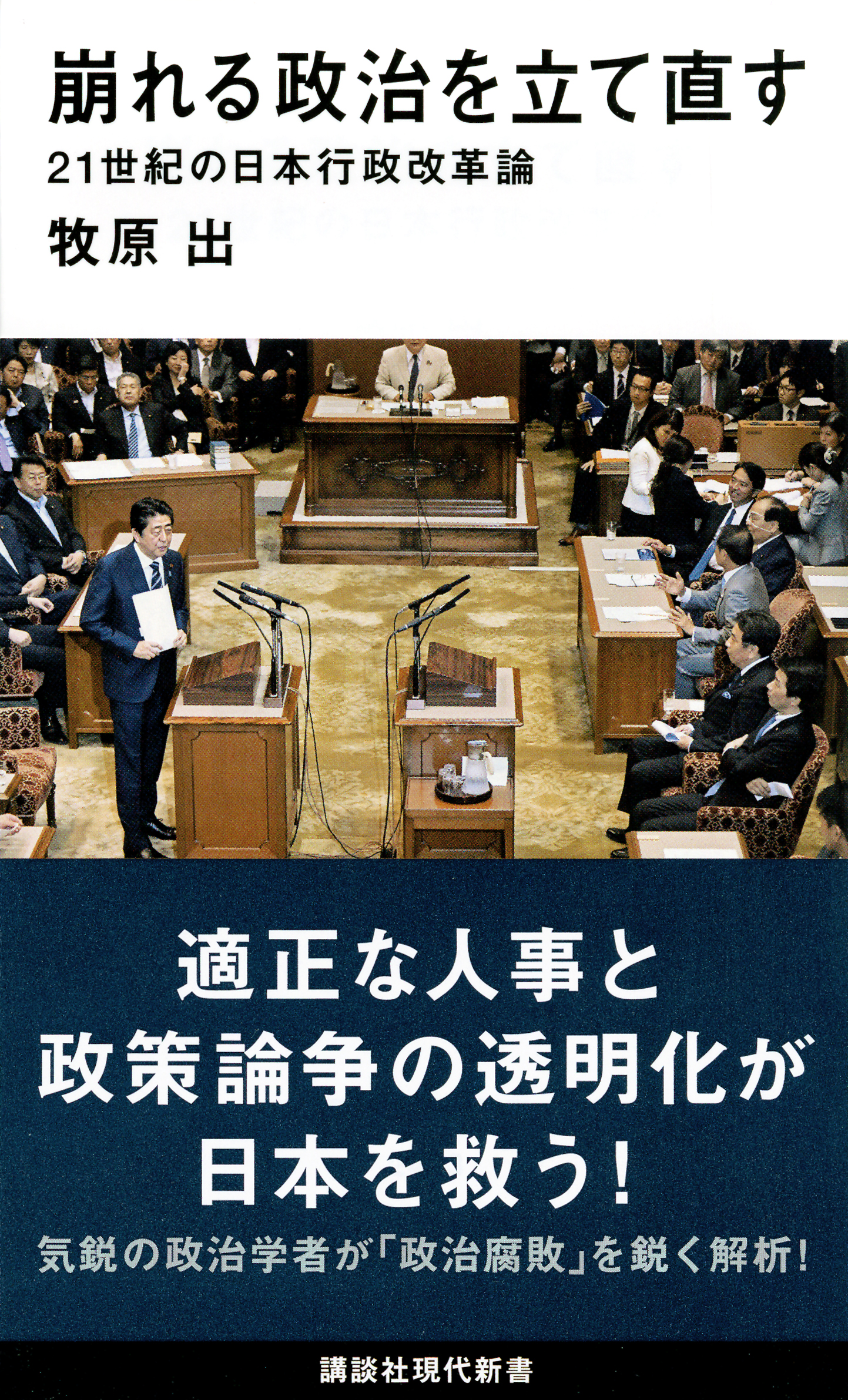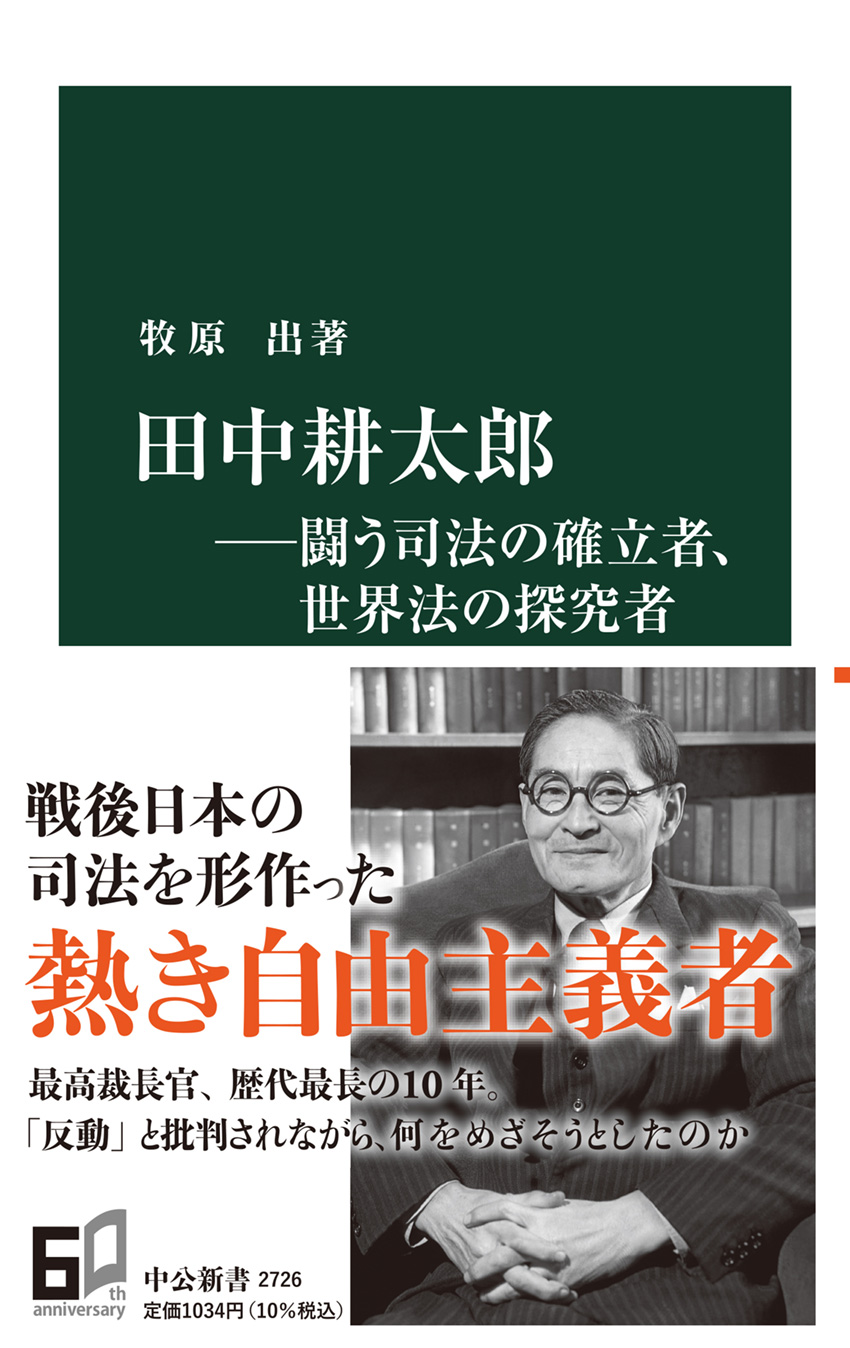
Title
Kuzureru Seiji wo Tatenaosu (Redesigning Japanese Government - A Reflection on Administrative Reform for Japan in the 21st Century)
Size
256 pages, paperback pocket edition
Language
Japanese
Released
September 19, 2018
ISBN
978-4-06-513077-3
Published by
Kodansha Ltd.
Book Info
See Book Availability at Library
Japanese Page
The Research Center for Advanced Science and Technology, University of Tokyo is a highly unique research institute, which attracts people working on cutting edge research across diverse disciplines. The center provides a space for ambitious, interdisciplinary collaboration. While the majority of the center’s research projects are in science and engineering, some projects are also conducted in the area of social science. This book was written out of a desire to explore the potential of political science and public administration research. The book aims to identify the link between the author's long-held interest in public administration with an emphasis on a historical perspective and engineering, which constantly generates new technological advances.
Of particular note is that political and public administrative phenomena, which are clearly different from preceding ones, have been seen on a daily basis after the last two changes of government in 2009 and 2012. With this backdrop, this book, based on the fundamental structure of historically formed Japanese public administration, examines the following: the current political climate after the last change of government; the potential of the immanent system from a perspective which posits operation as equivalent to maneuver; what can, and cannot, be achieved through the operation of the government; and what kind of reform can be executed taking into account the above inquiries.
The foremost question would be: What is the fundamental structure of Japan’s public administration? This book views it through the prism of the classic Five Ministries, which have been indicated in public administration history research from Germany and various other European countries. The Five Ministries encompass the following five areas: internal affairs, foreign affairs, financial affairs, legal affairs, and military affairs. All of them are deeply related to systems set forth in the Constitution of Japan. Additionally, to date, systems in each area have been developed in an extremely independent manner. Existing studies on public administration tend to focus on, and have accumulated knowledge of internal affairs (and financial affairs to a certain extent); however, this does not suffice to conduct a comprehensive analysis of public administration. Therefore, this book starts with an overview of the Five Ministries in delineating the pre- and post-WWII history of public administration in Japan. The salient components of Japan’s unique organization of public administration, in addition to the above Five Ministries, are: the ministry of trade and industry; and the Cabinet Legislation Bureau. The former drives systematic changes and policy reform, whereas the latter regulates the drive. Indeed, the framework consisting of the five areas and the two ministerial directions provides a comprehensive view of Japan’s public administration.
This proposition leads to another question: How does such a framework enable reform? One of the recent major reforms was the government restructuring in 2001. There has been increasing demand for another such reform from both government and the public. In addressing such demand, this book strongly focuses on an engineering perspective. In other words, it poses questions as to whether a plan for such a reform can be fulfilled.
It goes without saying that such a perspective has been inquired numerous times to date. Notable figures who explored this question include: Setsurei Miyake, a pre-WWII journalist who reviewed the Meiji era; Junji Banno, who, as a historian, depicted the political milieu following the promulgation of the Constitution of the Empire of Japan in his work entitled The Establishment of the Japanese Constitutional System (Routledge, 1992); and Heizo Takenaka, who facilitated structural reform in the Koizumi administration. Takenaka is a recent political figure who clearly reflected such a perspective in his memoirs.
In this book, this conceptual approach is referred to as “actuation studies.” While this approach has been prevalent in media, academia and policy governance, the book attempts to establish a systematic and theoretical method of actuation studies. Actuation studies play a key role in the 21st century where a society is broadly framed by information systems. When the former emperor Akihito announced in August 2016 that he was willing to abdicate, he pointed out that it is important for Japanese society not to create a vacuum during imperial transition. The Cabinet announced the name of the new era, Reiwa, one month prior to the succession of the throne, so that information systems would be updated without confusion. Such information-oriented, seamless reform is critical for Japan in the 21st century. It has been suggested to build a concept for a new system while untangling intricately interrelated information systems and administrative systems. The actuation studies that help explore the methods of integrating responsibility, acceleration, determination, and prudence with the system of public administration give rise to a thrilling, intellectual journey.
(Written by MAKIHARA Izuru, Professor, Research Center for Advanced Science and Technology / 2019)



 Find a book
Find a book







